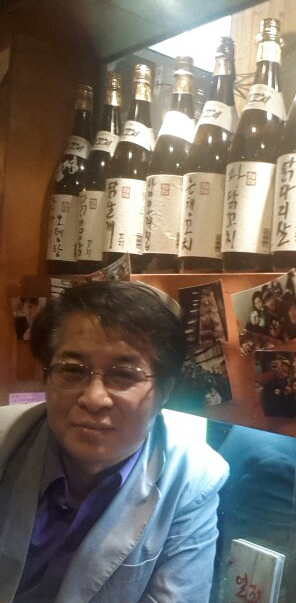[동영상 강의 유튜브 연우리 영어] → https://youtu.be/s59774VUgzw
[CT2-22]1001. [성균관대학교 2006-1]
While (A)[considering] what type of furniture (B)[to buy], the family may also be (C)[considered] the fundamentals of decorating. (D)[Having] these well in mind while making plans helps (E)[prevent] mistakes.
[CT2-22]1001. [진행과 수동]
정답 - C : [considered] → [considering] : 'be considered'로 수동태가 돼서는 뒤에 목적어가 따를 수 없다. 'be considering'으로 진행이어야 뒤에 목적어가 따를 수 있다.
A : 접속사 분사 구문 : = While they are considering ~
B : 'what type of furniture they should buy'에서 'they should'가 'to'로 바뀐다.
D : 'Having ~ plans'는 동명사로 'helps'의 주어로 쓰이고 있다.
E : helps (목적어) (to) prevent
[해석] 어떤 유형의 가구를 사야 할지를 고려 중일 때 우리 식구들도 또한 장식의 기본들을 고려하고 있을 겁니다. 계획을 세우는 동안 이점을 충분히 명심하는 것이 실수를 막는 데 도움이 된다.
[CT2-23]1002. [서강대학교 2012]
The world is (A)[made up with] objects. They have properties (B)[independent of] any people or other beings who experience them. For example, (C)[take a rock]. It's a separate object and it's hard. Even if no people or other beings (D)[existed in] the universe, it would still be a separate object and it would still be hard.
[CT2-23]1002. [수동태 뒤의 전치사]
정답 - A : [made up with] → [made up of] : '~로 구성되다'는 'be made up of ~'를 사용한다.
D : 사람이 존재하지 않는다는 것은 거짓이므로 가정법 과거를 사용한 것이다.
[어휘] independent of ~ : ~와 관계없이, ~와 별개로
[해석] 세계는 물질들로 구성되어 있다. 물질들은 물질들을 경험하는 사람들이나 다른 존재들과 관계없이 나름의 속성들을 지닌다. 예컨대 바위를 보자. 바위는 별개의 존재로 단단하다. 만일 사람이나 다른 존재들이 세상에 존재하지 않는다 하더라도 바위는 여전히 별개의 존재로 여전히 단단할 것이다.
[CT2-24]1003. [삼육대학교 2006-1]
Diamonds are often found in rock formations called pipes, _____ the throats of extinct volcanoes.
(A) in which they resemble (B) which resemble
(C) they have a resemblance to (D) that resemble
[CT2-24]1003. [계속적 용법의 관계사]
정답 - B : which는 주격 관계사로 쓰이고 있다.
D : 'comma'가 있는 제한 관계절에서 'that을' 쓸 수 없다.
A : 'in which'는 'in them'(= pipes)를 받은 것인데 의미상 연결이 안 된다.
C : 두 개의 절이 'comma'만으로 연결될 수 없다. 최소한 'they'가 'which'로 바뀌어야 한다.
[해석] 다이아몬드는 관상 광맥이라 불리는 바위 층에서 종종 발견되는데 사화산의 개구부와 유사하다.
[CT2-25]1004. [가톨릭대학교 2012]
다음 글에서 문법적으로 잘못된 표현이 포함된 문장을 고르시오.
(A) Rain that washes over the world's cities and farmlands carries containments such as grease, pesticides, fertilizers, and many other kinds of toxic chemicals into storm drains and then out to sea. (B) The ocean is also polluted by spills from oil tankers, and sewage is yet another major form of ocean pollution. (C) Although most developed countries treat sewage at waste-water facilities, many cities in the world's poorer areas have little or no sewage treatment, so human waste goes directly into the ocean. (D) Even in countries that treat waste, flooded sewage pipes often back up into storm drains allow untreated wastes to flow directly out to sea.
[CT2-25]1004. [정동사의 등위]
정답 D : [allow] → [and allow] : 주어인 'pipes'의 정동사로 'back'이 나온 후에 '정동사인 allow'가 그냥 따를 수가 없다. 등위 접속사인 'and'가 앞에 있어야 한다.
[어휘] sewage : (하수도(sewer)의) 오수, 하수 storm drain : 빗물 배수관, 우수(雨水) 배수관
back up : if a toilet, sink, drain, pipe backs up, or is backed up, water cannot flow through it because something is blocking up : 막혀서 뒷부분이(back) 올라서(up) 역류하다
[해석] (A) 세계의 도시들과 농지 위를 휩쓸고 가는 빗물은 기름, 살충제, 비료와 다른 종류의 화학 물질들과 같은 오염 물질들을 빗물 배수관으로 날라서 결국에는 바다로 보내게 된다. (B) 바다는 유조선의 기름 유출로도 오염되며 하수도 또 다른 해양 오염의 주된 형태이다. (C) 대부분의 선진국들은 하수 처리 시설에서 하수를 처리하지만 세계의 더 가난한 지역의 많은 도시들은 하수 처리 시설이 거의 또는 전혀 없어서 인간의 폐기물은 직접 바다로 흘러가게 된다. (D) 심지어 하수를 처리하는 국가들에서도 홍수 때 하수관은 종종 막혀서 빗물 배수관으로 역류해서 처리되지 않은 폐기물을 직접 바다로 흐르게 하고 만다.
[CT2-26]1005. [경기대학교 2011-1]
Columbia (A)[has suffered] the heaviest rain in decades (B)[due to] the La Nina weather phenomenon, which (C)[is caused] water temperature in the Pacific Ocean (D)[to drop].
[CT2-26]1005. [관계절의 능동과 수동]
정답 - C : [is caused] → [causes] : 뒤에 목적어가 있으므로 능동형인 'causes'를 써야 한다.
[해석] 콜롬비아는 라니나 기후 현상으로 인해 수십 년간의 가장 심한 호우를 겪었는데 라니냐는 태평양의 수온을 떨어지게 한다.
[CT2-27]1006. [전남대학교 2003-1]
(A)[The average age] of (B)[the Mediterranean] olive trees (C)[grow] today is (D)[two hundred years].
[CT2-27]1006. [후치 수식]
정답 - C : [grow] → [growing] : 정동사로는 후치 수식이 되지 않는다.
[해석] 오늘날 자라고 있는 지중해 올리브 나무들의 평균 나이는 200년이다.
'편입 문법 3000 Plus' 카테고리의 다른 글
| 편입 문법 3,000제+ 강의 [194회] (0) | 2021.01.27 |
|---|---|
| 편입 문법 3,000제+ 강의 [193회] (0) | 2021.01.27 |
| 편입 문법 3,000제+ 강의 [191회] (0) | 2021.01.27 |
| 편입 문법 3,000제+ 강의 [190회] (0) | 2021.01.26 |
| 편입 문법 3,000제+ 강의 [189회] (0) | 2021.01.26 |
